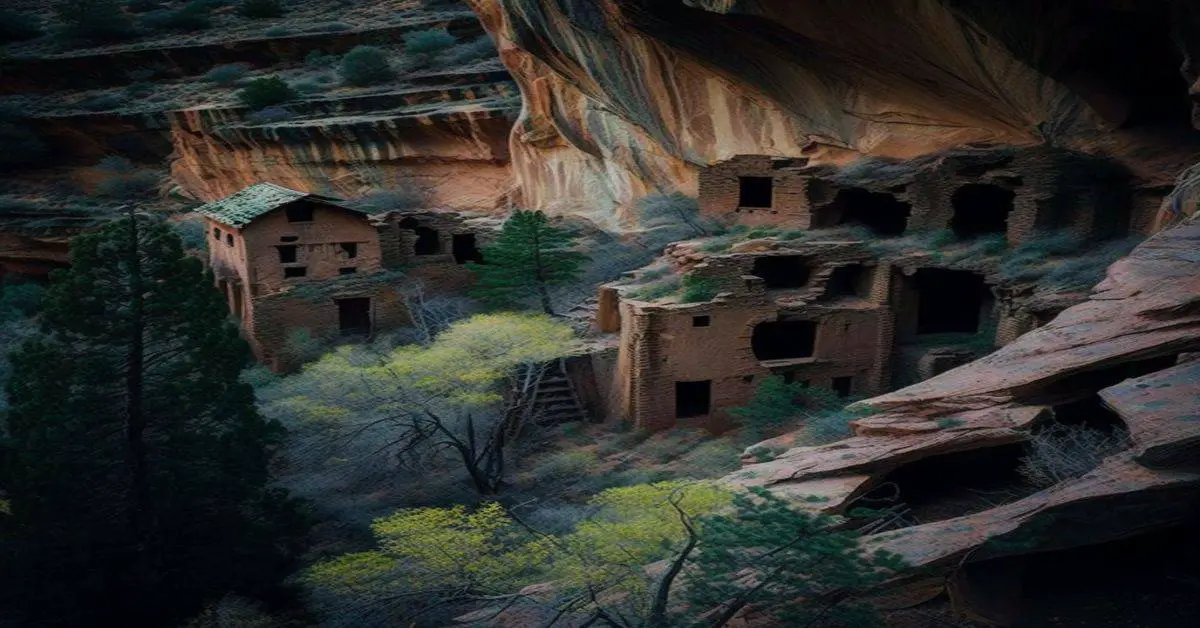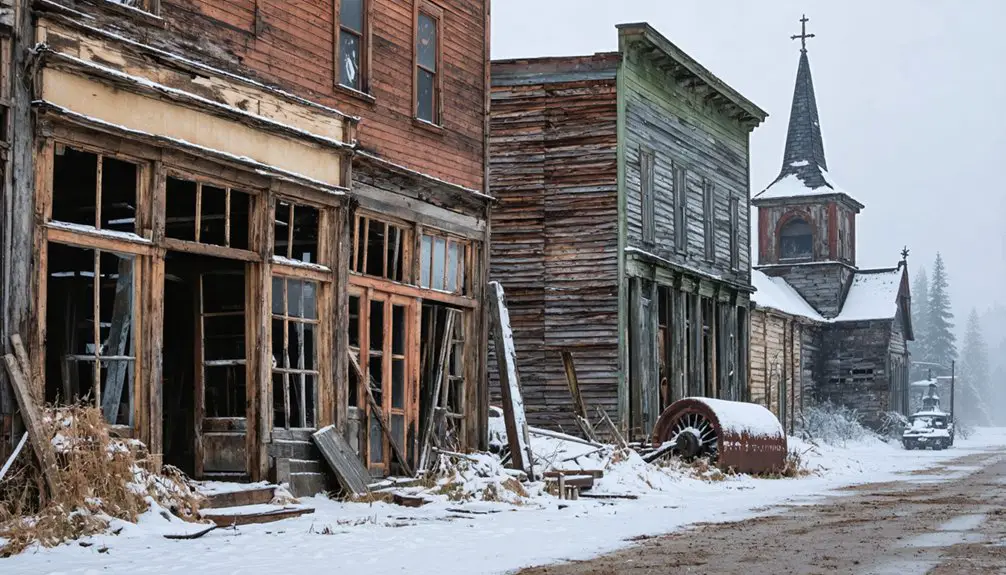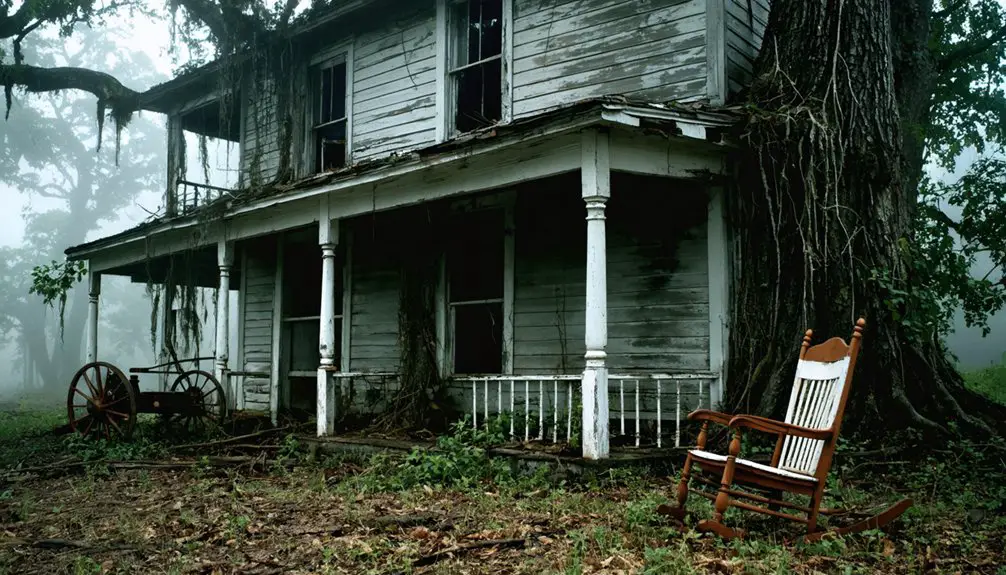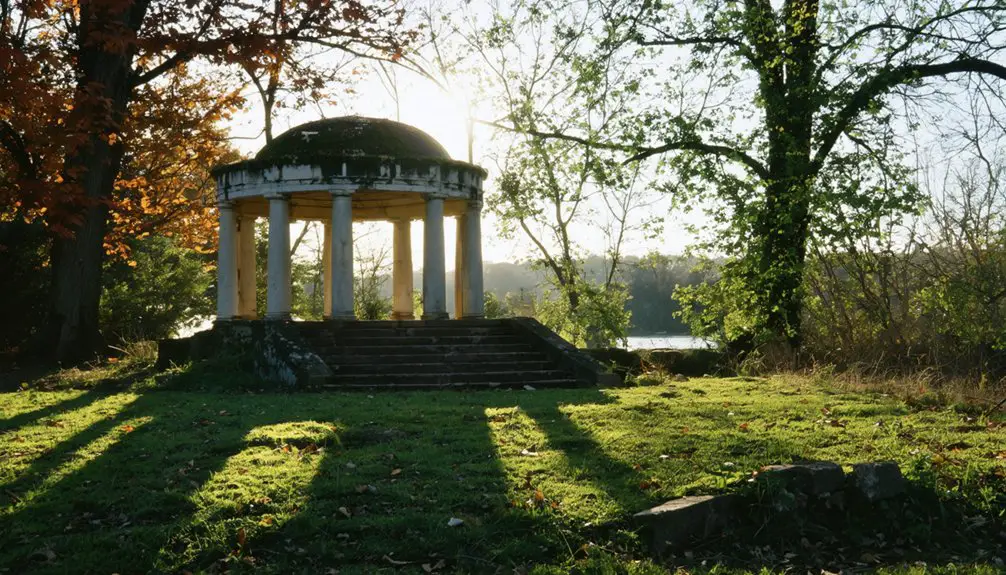On June 20, 1863, two years after splitting away from the eastern part of Virginia, West Virginia became the 35th state of the United States.
There are 69 ghost towns in West Virginia. Some towns have disappeared entirely, others may have limited accessibility, and a few still have structures and ruins left behind for a glimpse into the past.
West Virginia is in the southeastern, Mid-Atlantic, and Appalachian regions of the USA. Throughout the 1800s and 1900s, the state was known as one of America’s coal mining hubs. Mining operations came to a standstill after minerals were exhausted and devastating fires consumed anything in their path.
Towns were abandoned as work became available in other mines. Of all the ghost towns in West Virginia, sixty can be found on a stretch close to New River George.
Kaymoor, West Virginia
Kaymoor, West Virginia, is a former coal-mining town on the New River George. From 1899 to 1962, many people inhabited this town. By 1962, a massive fire destroyed most of the coal camp, completely shutting down mining operations.
There are beautiful remnants of structures that will transport you back to the time when the mining business was at its peak.
To get a glimpse of the richness of the Kaymoor, you must go down a flight of 821 steps after a one-mile walk. When you climb down the stairs, scenes of abandoned coal mines will welcome you with open arms. The coal camp structures, powder house, coal tipple, mining equipment, and coal carts are some of the sights you can revel in.
Here, you will not only get to know the richness of the mining history, but you will also learn the dangers these people lived within those coal mines. Several danger signs, safety warnings, and track records of accidents in the mines are still available.
However, when you visit Kaymoor, you should be aware of your safety, as the place could contain some unseen hazards at those mining sites.
Thurmond, West Virginia
Established in 1873, Thurmond was a popular coal and lumber port. Many people resided here, and it was one of the busiest towns in West Virginia, with hotels, cinemas, banks, general stores, and other essential establishments.
However, by the 1930s, Thurmond witnessed its downfall. While the Great Depression bankrupted the banks, the invention of diesel engines drastically reduced the use of steam engines.
Massive fires destroyed the hotels, stores, and other buildings here. As all the businesses started to decline, all you can see today are the remnants of the coaling station, rusted tracks, and some ruins.
You can find many empty homes and traces of some of the excellent rail infrastructure here, which tell you a lot about how busy and commercial Thurmond was in the early 1900s! The train station, which is now renovated into a museum, will give you a lot of insight into the boomtown Thurmond was many years ago.
Sewell, West Virginia
Located on the New River Gorge, towards the southeast of Fayetteville, Sewell was one of the hubs of coking operations in the early 1900s. In those days, coking referred to the process of coal being heated in huge ovens at a temperature of more than 600 degrees Celsius without using oxygen.
Almost 200 beehive coking ovens were used for the process. Unlike Kaymoor and Thurmond, Sewell cannot be accessed easily.
It would be best if you asked the Babcock State Park rangers for directions to reach this place, which is slightly off the main road. However, it contains over 70 beehive oven remnants even today, which is a treat to see.
You can visit this place any time during the year; walk down towards the bed of the road and find the spring. While having a 4WD to reach this place is not mandatory, using one can help you get here quicker than expected.
The spring contains fresh water and was the source of drinking water for the people living here many years ago. Apart from the ovens, you can also find the church’s remnants, store, and gauge railroad tracks.
Alaska, West Virginia
Another mining town on the New River Gorge, Alaska, was a principal coal-mining town from 1890 to 1914. An interesting feature about this place is that gravity was used to transport coal to various locations without technology during that time.
Close to 17 mining structures were constructed in this mining town. Today the remnants of a few of those structures can still be found.
Gaymont, West Virginia
Located in Fayette county, Gaymont is one of the most beautiful, deserted ghost towns in West Virginia. It was in 1878 that mining started in this small town, giving a livelihood to the inhabitants. By 1906, the coal mining structures had 125 coking ovens.
Close to 32 houses were constructed, and mining began in full swing. However, by the 1930s, the Great Depression, massive fires, and depletion of coal resources in this region led to the mining town’s downfall. Today, as you pass by this place, you can find the ruins of many foundations.
Rutherford, West Virginia
Established in 1881, Rutherford was a vital lumber camp in West Virginia. However, even then, only about 100 people lived here. A church, post office, school, and stores were set up here to cater to the inhabitants’ needs.
As the mining industry witnessed a considerable drop globally, everyone shifted from Rutherford to other places, searching for better jobs. This is a completely deserted ghost town today, as no one lives here. All you can find are ruins of individual stores and the dilapidated condition of about two or three houses.
Ames, West Virginia
From 1885 to 1930, this place was known as Elmo. It was not only famous for its mines but its railway station as well. Though the primary mine was closed in the 1930s, the Ames Mining Company started its operations here after a decade. It was this company that replaced the name Elmo with Ames.
The company chose the name Ames, as it was the first letter of the four mines’ names in the vicinity – Ajax, Michigan, Elmo, and Sunnyside. Eventually, mining operations stopped, and the town was left abandoned. Today, all you can see are the ruins of the foundations.
Haunted Places In West Virginia
According to some people, the Lake Shawnee Amusement Park is located on cursed land. Many children died during a war that occurred here in the 1700s. When the amusement park was opened to the public in the 1920s, it witnessed several fatal accidents.
The park was shut down in 1966. However, today, the place arranges private paranormal tours for interested tourists.
The Harpers Ferry National Historical Park, located in the town of Eastern Panhandle, offers ghost tours to tell you about the presence of spirits in this location. It is believed that the spirits of people, who died hundreds of years ago, still wander in this location.
West Virginia offers a lot for people interested in adventure, heritage, and ghost tourism. The state’s vast expanse speaks volumes about the rich history and mining businesses that existed here many years ago.
While most ghost towns discussed here are open to tourists, you should check with the local tourism department about the guidelines you need to follow in these locations. Every place has an interesting story woven into it.



